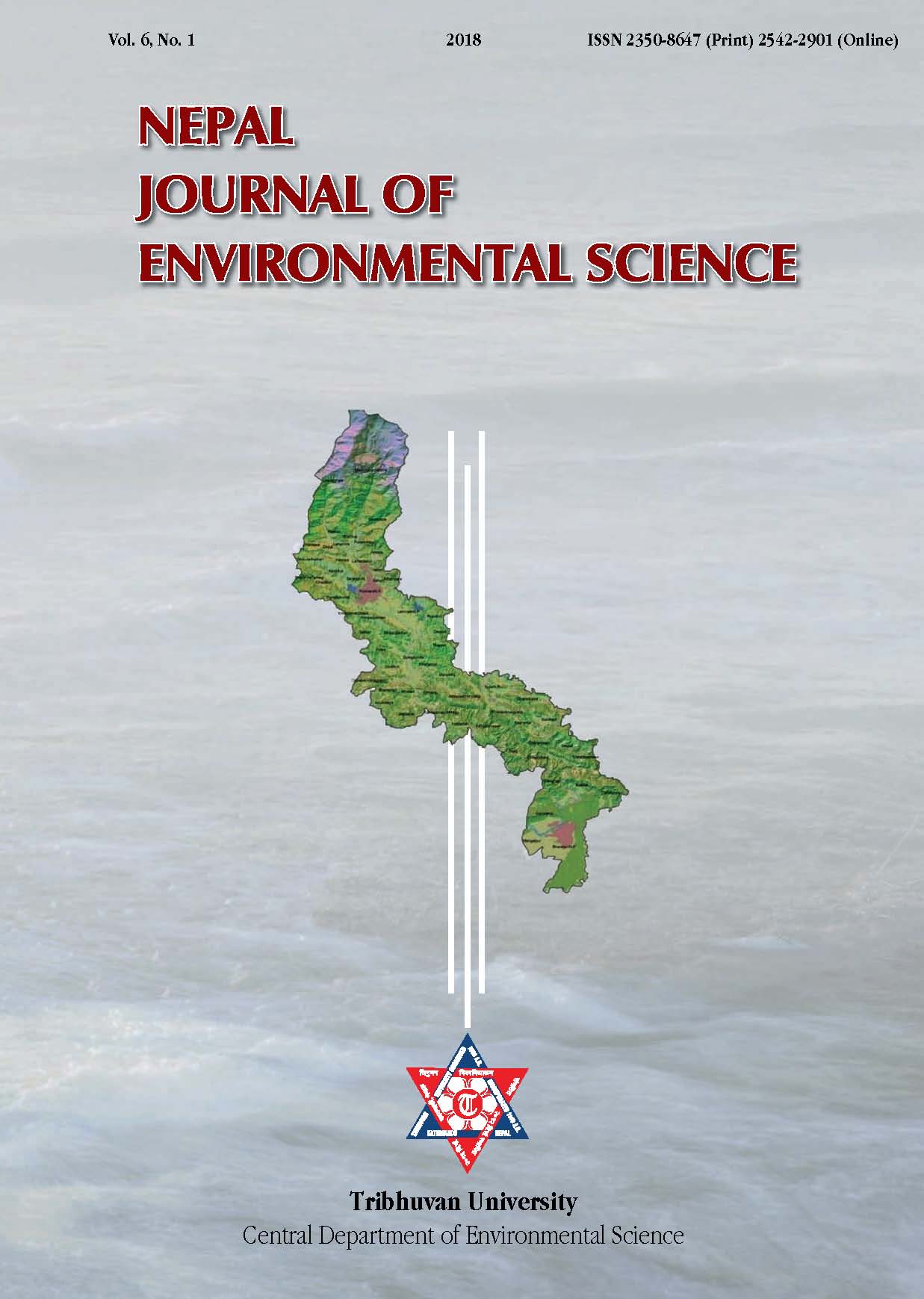Carbon stock estimation of Shree Rabutar Forest of Gaurishankar Conservation Area, Dolakha, Nepal
DOI:
https://doi.org/10.3126/njes.v6i0.30127Keywords:
Biomass, Carbon dioxide, Soil carbonAbstract
Forests store significant amount of atmospheric carbon in the form of above and below ground biomass and the amount of carbon stored in forests differs along spatial continuum which provides important information regarding forest quality. This study was carried out to estimate the carbon stock of Shree Rabutar Forest of Gaurishankar Conservation Area, Dolakha, Nepal. In total, 20 circular sampling plots with an area 250 m2 were randomly laid in the study area. Ten tree species were observed in the sampling plots laid in the forest. The higher values of density, frequency, abundance and basal area were observed for Rhododendron arboreum, Alnus nepalensis, Pinus roxburghii and Pinus wallichiana. On the basis of Important Value Index, the dominant tree in the forest was Alnus nepalensis followed by Rhododendron arboreum and Pinus roxburghii. Shannon Index of general diversity of trees in the forest was 0.74 with equal value of Evenness Index, whereas the index of dominance was low (0.22) in the forest. Mean biomass of the forest was 464.01±66.71 tonha-1 contributed by above ground tree biomass (384.44 tonha-1), leaf litter, herbs and grasses biomass (2.69±0.196 tonha-1) and below ground tree biomass (76.88±11.13 tonha-1). Mean carbon stock was 262.77±30.79 tonha-1 including soil carbon stock 44.69±2.25 tonha-1. Individuals of trees with 20-30 cm DBH class were observed in maximum number, which shows that the forest has high potential to sequester carbon over time. Carbon stock estimation and forest management can be one of the potential strategies for climate change mitigation especially through carbon dioxide absorption by the forests.
Downloads
Downloads
Published
How to Cite
Issue
Section
License
This license enables reusers to distribute, remix, adapt, and build upon the material in any medium or format for noncommercial purposes only, and only so long as attribution is given to the creator.

